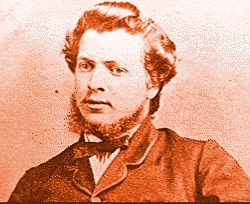Question 2: Coyote Pedagogy is a term sometimes used to describe King’s writing strategies (Margery Fee and Jane Flick). Discuss your understanding of the role of Coyote in the novel. Throughout Thomas King’s Green Grass, Running Water, Coyote appears alongside the narrator, who tells and retells the story of where all the water at the beginning of the story came from. The presence of Coyote, a trickster in Indigenous fiction, “helps to communicate a particular lesson about life to listeners” (Coyote Facts). Despite his antics and seemingly clueless nature, his line of questioning not only provides comic relief, but his interjections also illuminate various issues otherwise hidden within the narrative:
“Wait, wait,” says Coyote. “When’s my turn?” “Coyotes don’t get a turn,” says Coyote. “Nonsense,” I says. “In a democracy, only people who can afford it get a turn.” “How about half a turn?” says Coyote. “Sit down,” I says. “We got to tell this story again.” “How about a quarter turn?” says Coyote. (327)
In this particular example, the narrator’s remark regarding democracy is an unfortunate aspect of our system – those who make the decisions at the top of our democratic hierarchy are often the wealthy elite who can afford the expensive campaigns often needed to win elections. To further this point, in 2008 “successfully-elected candidates in the Vancouver municipal election spent on average $36,246. In Vancouver, the average spending of elector organizations supporting candidates that were elected was $1,100,233, and the average spending of campaign organizers was $47,826” (Campaign Financing, 4). As such, though Coyote’s ignored appeals for his turn to speak feels lighthearted in this context, it highlights the important issues of silenced voices that those who are powerless or part of the minority face in our society. Apart from expanding our awareness, Coyote also serves to embody the oral culture of the Indigenous people. I found that as I was reading the novel, I had to read certain parts aloud (particularly some of the names on page 182 – well played, King). Most notably, the parts with Coyote speaking seemed to work better when I read them out loud, which was rather reminiscent of Harry Robinson’s short story, “Coyote Makes a Deal with King of England”. Having experienced Robinson’s story, feeling compelled to read aloud wasn’t what stood out for me; rather, it was the smooth blending of both this vocal and silent story-telling that really made the whole experience unique. This blend is not only a combination of the Western literary style with Indigenous oral story-telling, but it is also the amalgamation of Christianity and Coyote. On page 146 of the novel, when Noah states that bestiality is “against the rules,” Coyote responds with “but he doesn’t mean Coyotes.” Here, Margery Fee and Jane Flick comment on King’s blending of two cultures in one narrative:
Rules are made for coyotes to break! Apart from ignoring borders between animal and human (or divine and human, if you prefer), this subversive move makes the central story of the Christian religion into a Coyote story, and repeats the novel’s overall strategy which subsumes European culture and history into an Aboriginal framework, and counters a patriarchal religion with a matriarchal one. (136)
At the beginning of the novel, it took me a while to grasp what was happening – the significance of each character and their connections with one another were revealed bit by bit; the whole process felt like putting together a puzzle, really. Even then, the narrative would slip away from me sometimes, and I found myself flipping back a few pages to check if what I inferred was correct or to reorient myself within the context again. It may just be me, but this novel seem to have the characteristics of Coyote: tricky at times, and despite the humour, there are important lessons to be learned. Sidenote: As I was reading up on the character of Coyote, I stumbled across this term that I thought would be interesting for people to know: Heyoka, which means “trickster spirit”. There is also a discussion forum with helpful postings about what this term encapsulates.

Source: http://www.indiancanyonlife.org/ksr/
Works Cited


